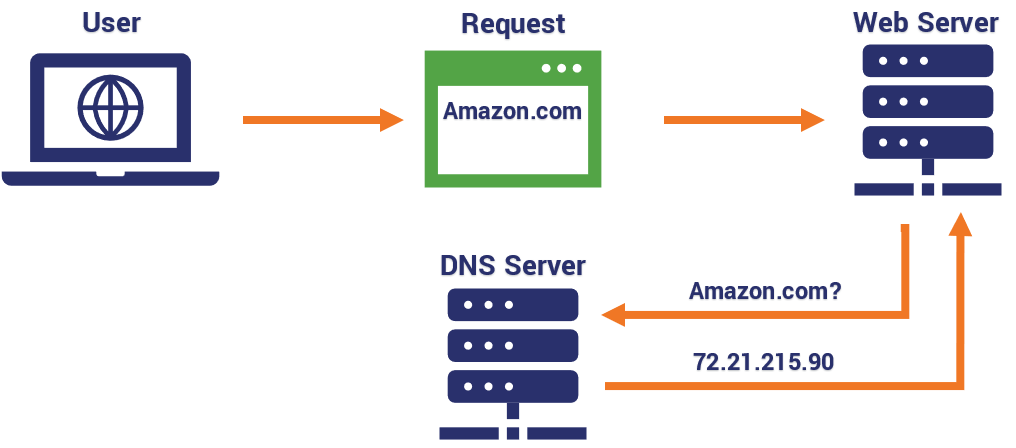The internet is used all throughout society today, ranging from looking up the recipe for a meal to navigating your car. If someone would be able to turn the internet off, he would be able to cause an enormous chaos. Is there someone with this kind of power? The answer is no, but there are seven people in the world that together actually can.
Domain Name Servers
Before we can understand how these seven people control the internet, we have to take a step backwards and look at how the internet works. The internet is made up out of a lot of computers that all host a part of the internet. Each of these computers has its own unique Internet Protocol address (IP address). If you type in www.wikipedia.com, your computer has to find the IP address of the corresponding computer that hosts that certain web page. In order to do this, things called Domain Name Server (DNS) are used. Domain Name Servers are hierarchically structured in a tree-like way, each higher level controlling a bigger part of the internet. Above each Domain Name Server are organizations that administer the process and issue domain names. And above the highest level sits an organization called ICANN (Half as Interesting).

ICANN
ICANN stands for Internet Corporation for Assigned Names and Numbers. ICANN runs the root servers on which the entire DNS structure is dependent. Every DNS contains a secured key that is able to verify the Domain Name Servers that are one hierarchic level below. This is how the entire system is structured and no fake or wrong IP addresses come into the mix. Because ICANN runs the root DNS structure, it also guards the secured numeric key that verifies the entire internet. If this system is taken down, computers would no longer be able to find the correct IP address for every website and thus, the internet would not function (EverythingEverywhere).
The keys
This immensely important root key is stored on a device called a Hardware Security Module (HSM). There consist four of these HSM`s in the world, two in a station in Culpeper (Virginia), and two in a station in El Segundo (California). The place where the HSM`s are stored can only be accessed by using special smartcards, of which there are only seven. These smartcards are stored in boxes that can only be opened by using physical keys (Guardian).
The Keyholders
The keys are held by seven people, distributed all over the globe. These keyholders are experienced security experts, designated by ICANN. If the DNS system would ever have to be rebooted (or taken down) five of the seven keyholders would have to gather at one of the two ICANN facilities. They would have to pass a load of security measures including biometric hand and iris scans in order to enter the building. They then would have to use their keys in what is called a “key ceremony” in order to obtain the smartcards. They then would be able to access the HSM and perform their task (Guardian).
There is some criticism about the power over the internet being held by ICANN, a America-based organization, and not a international one. But as you have read the ICANN has done its best to make the procedure to access the root security key of the internet a international one. It might sound like a bit like a bad action movie, but I think it is nice to know that the internet is in relatively safe hands.
If you are interested, you can watch this video explaining the procedure in more detail:


Recent Comments